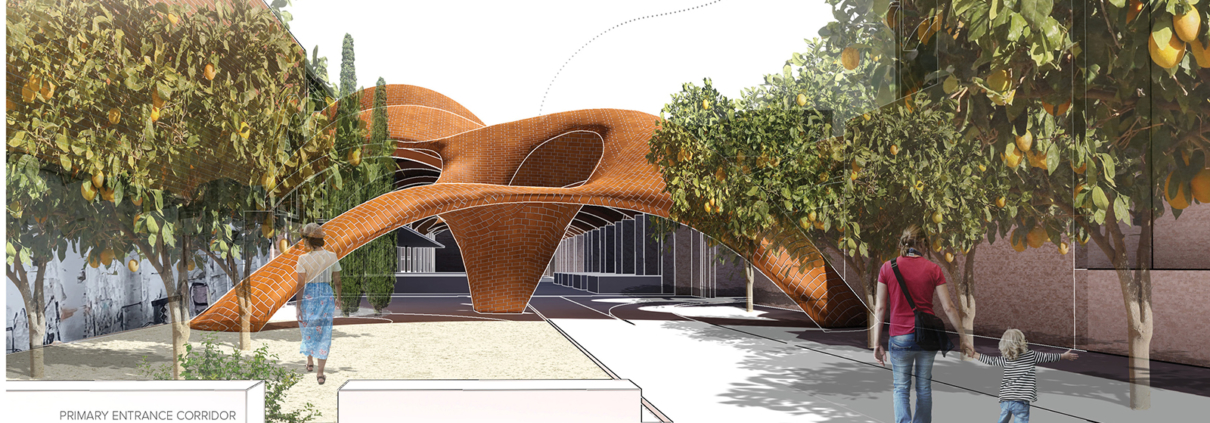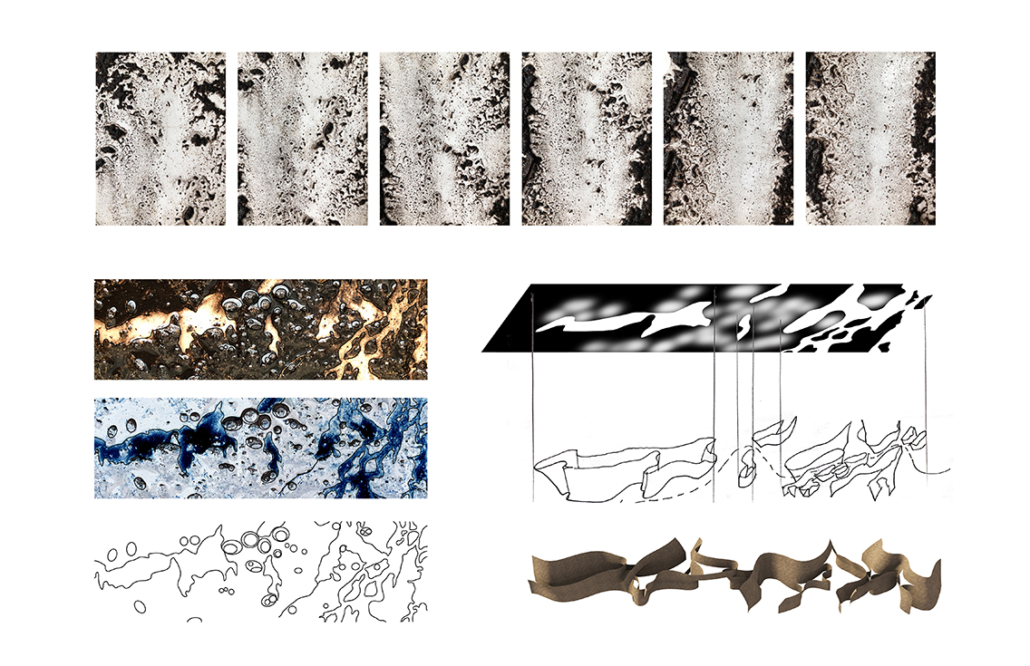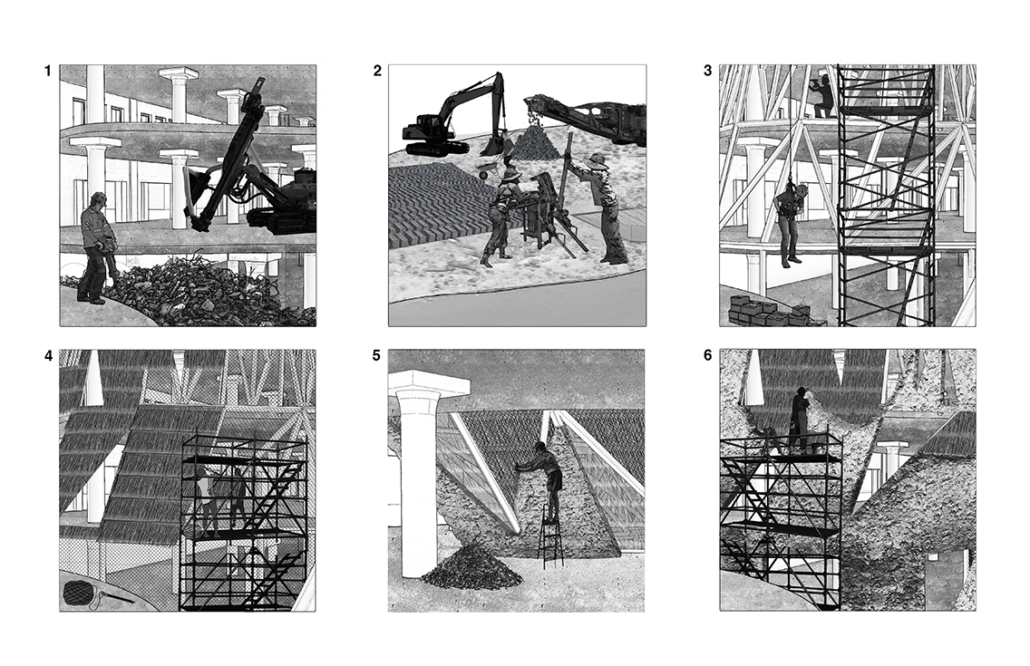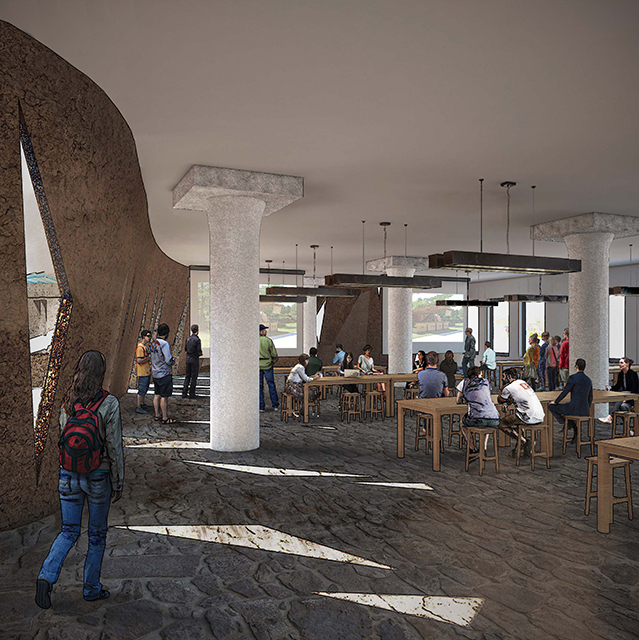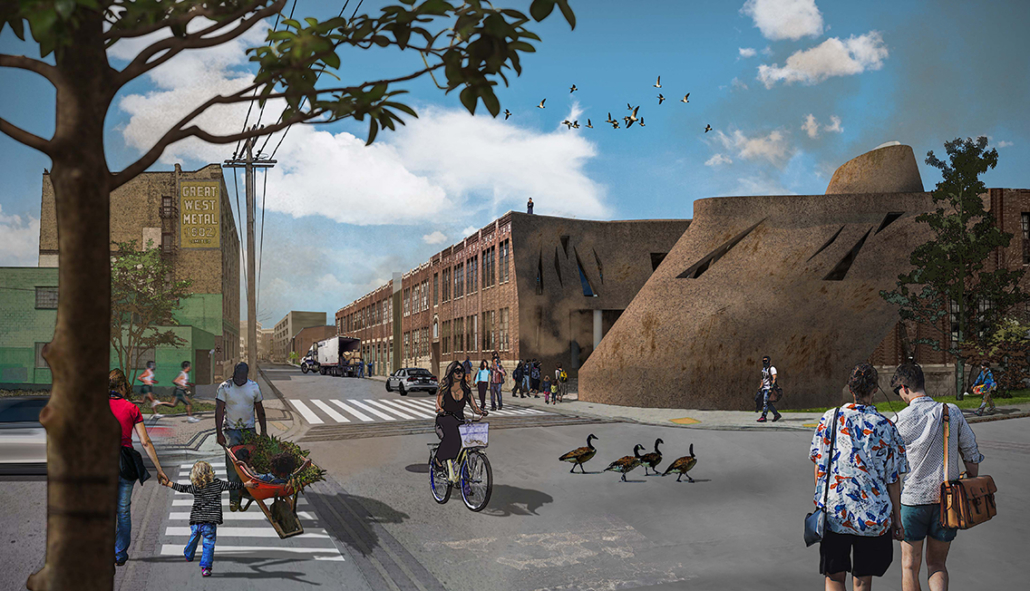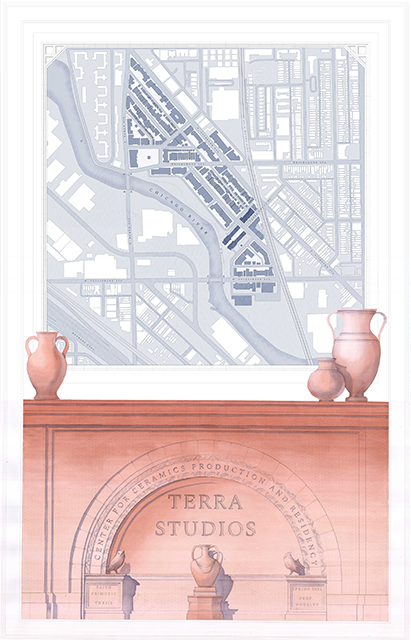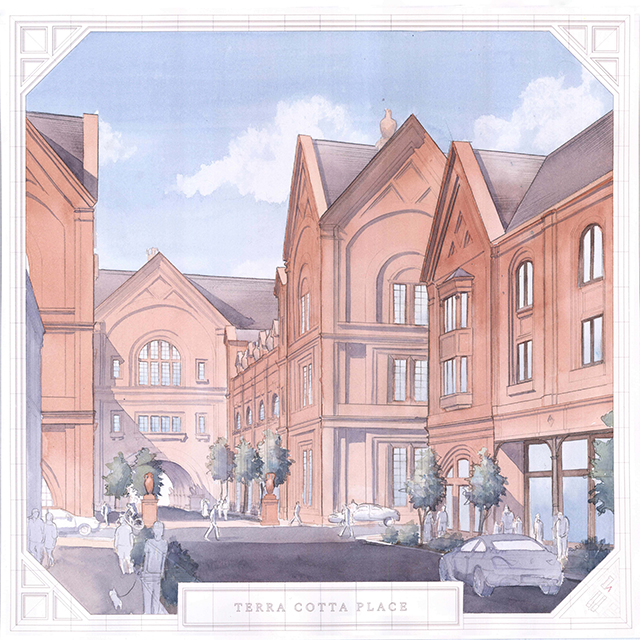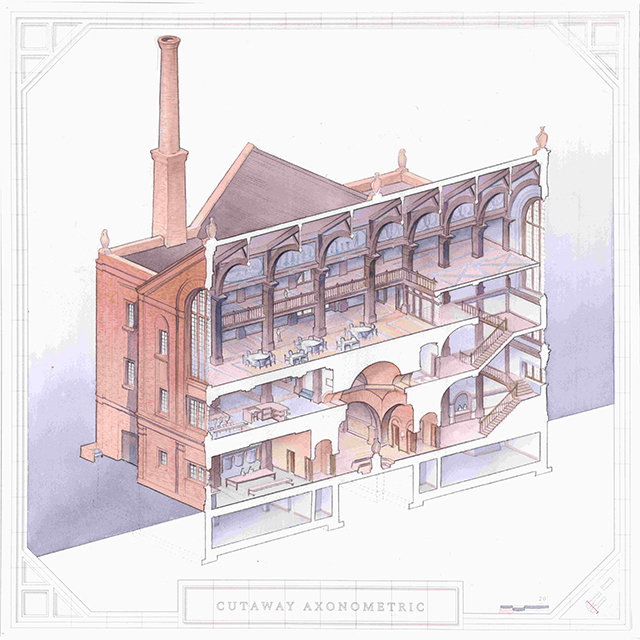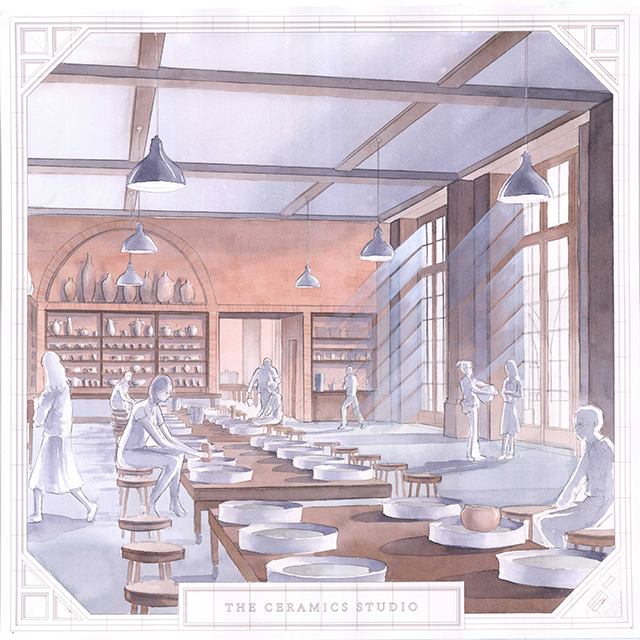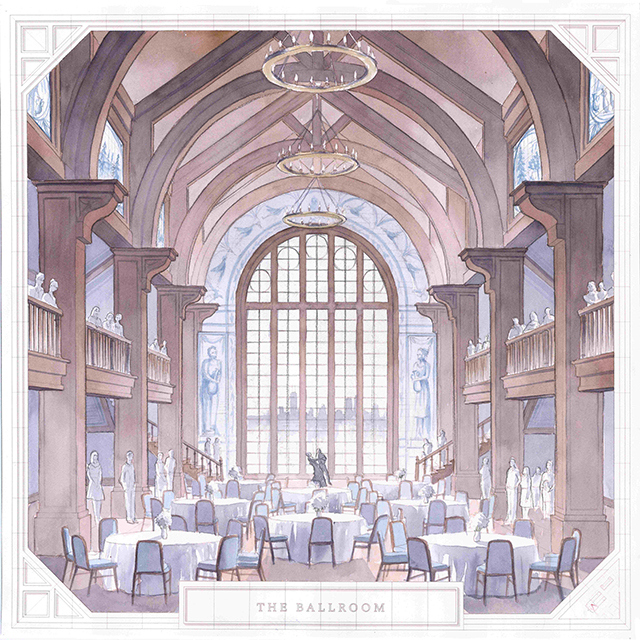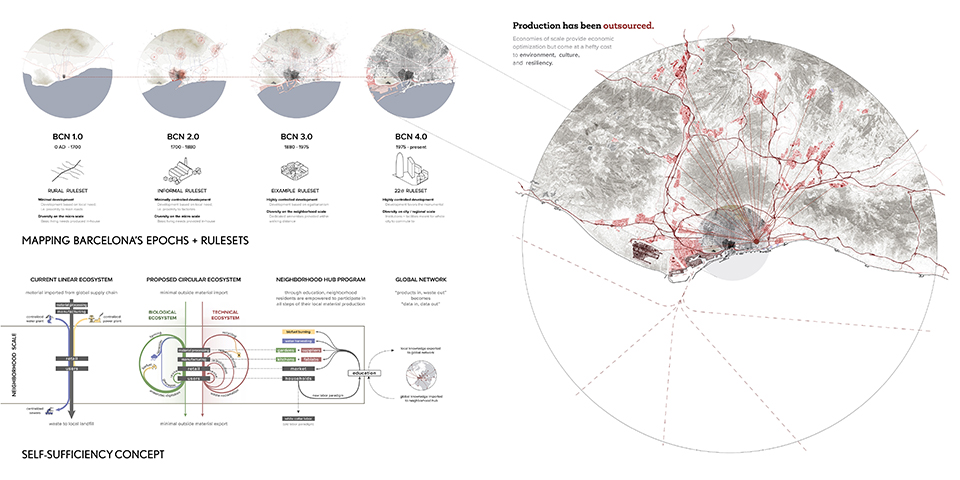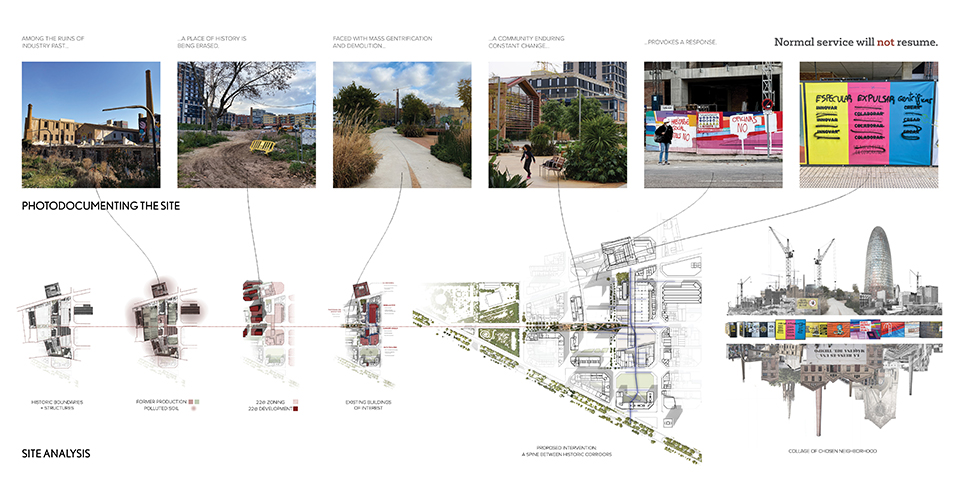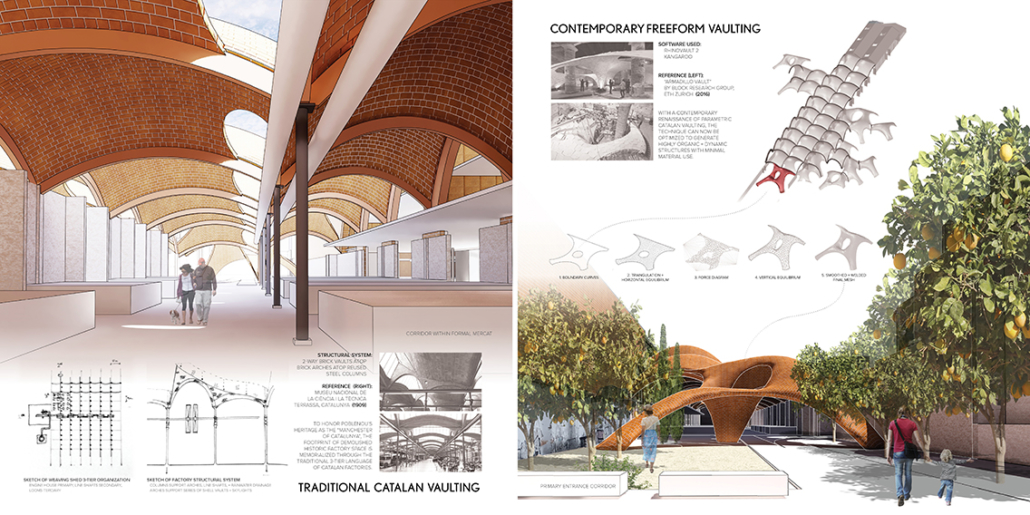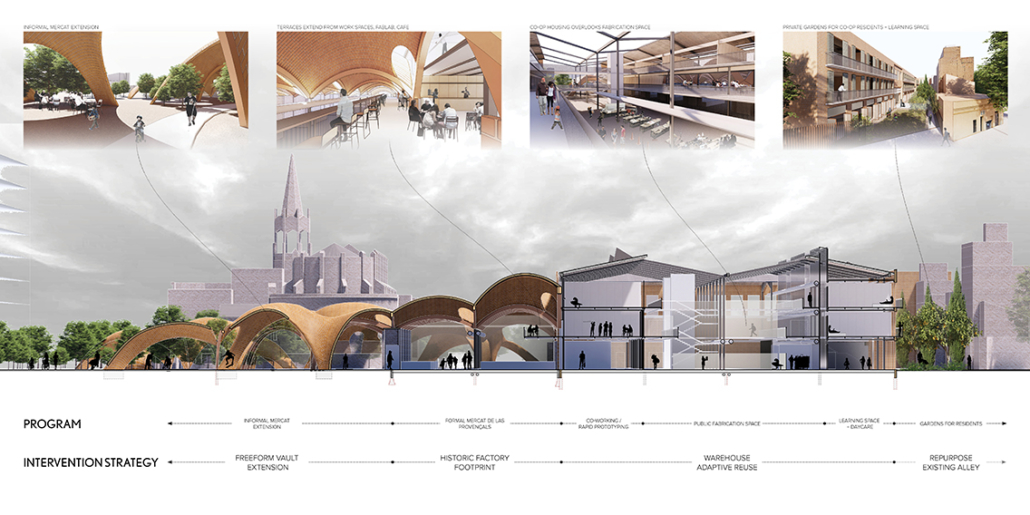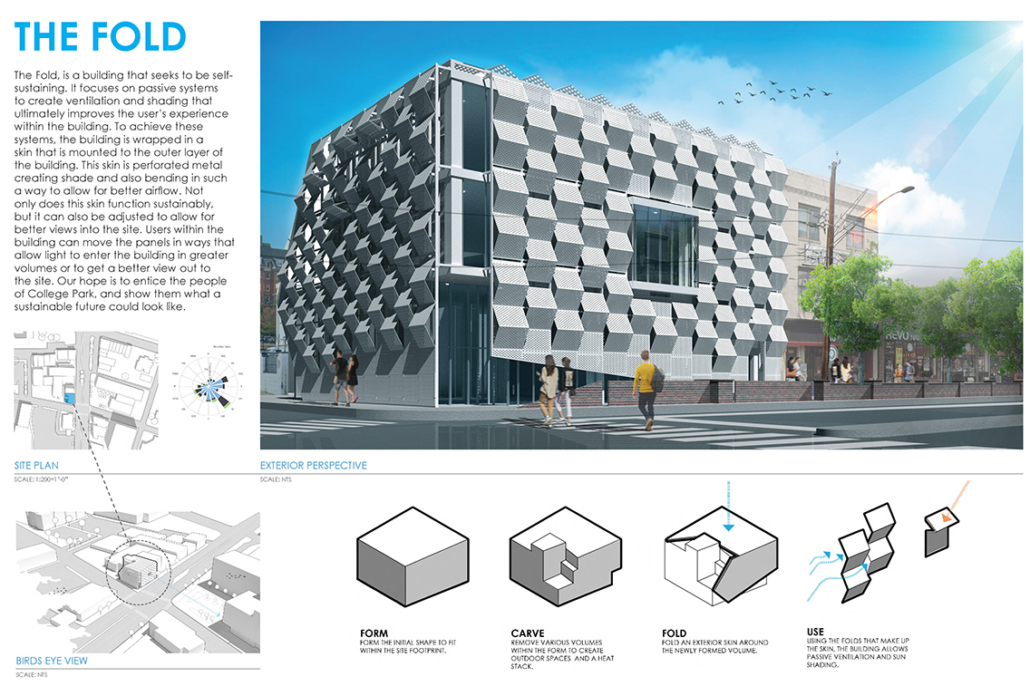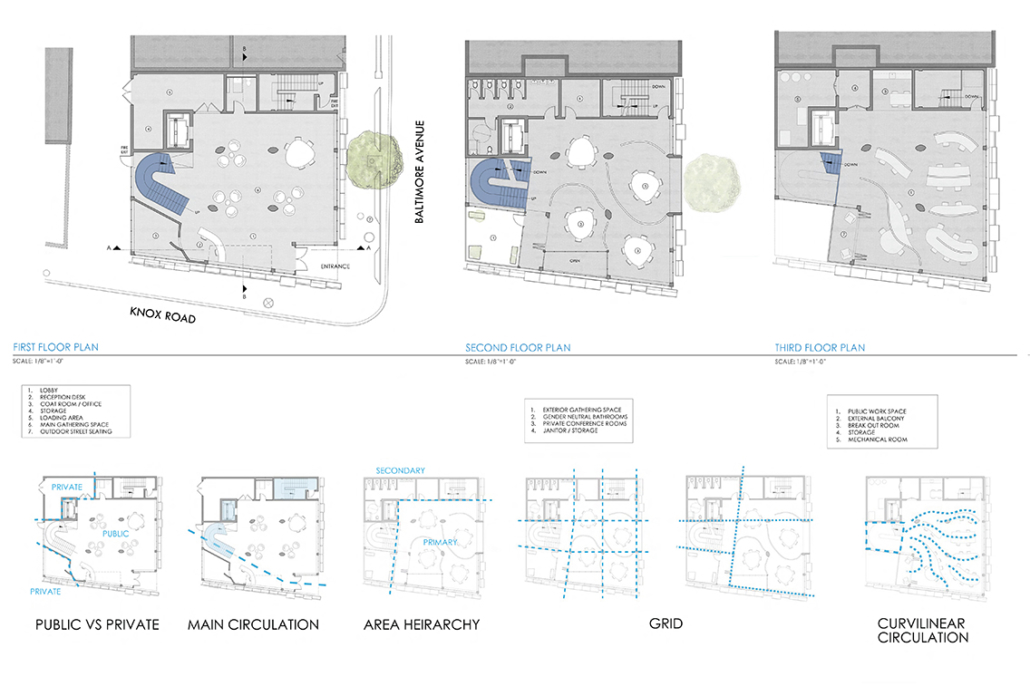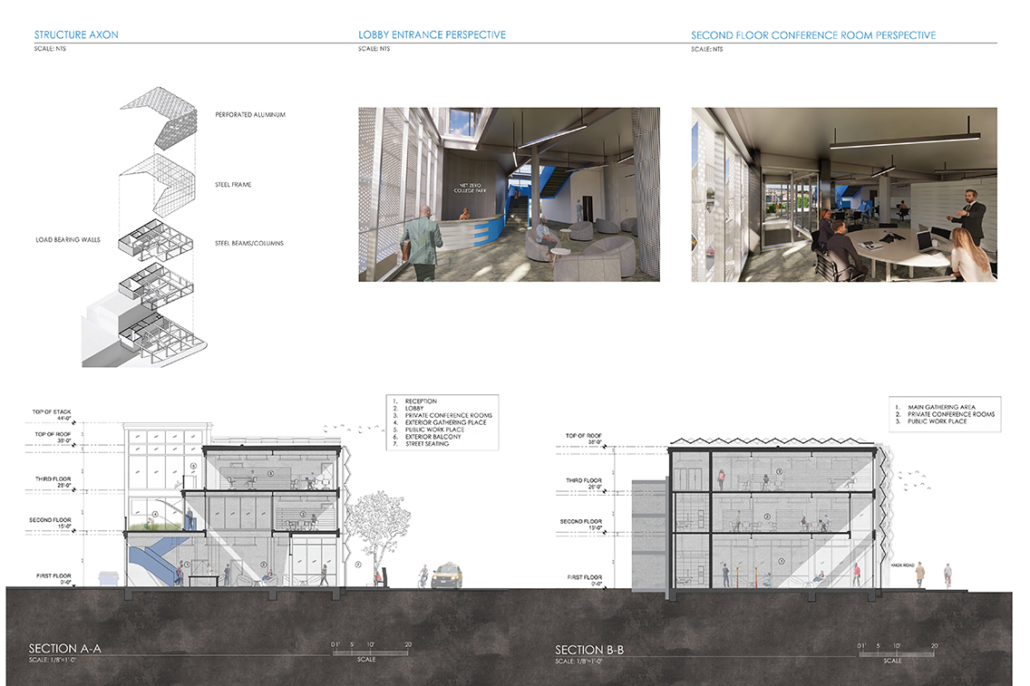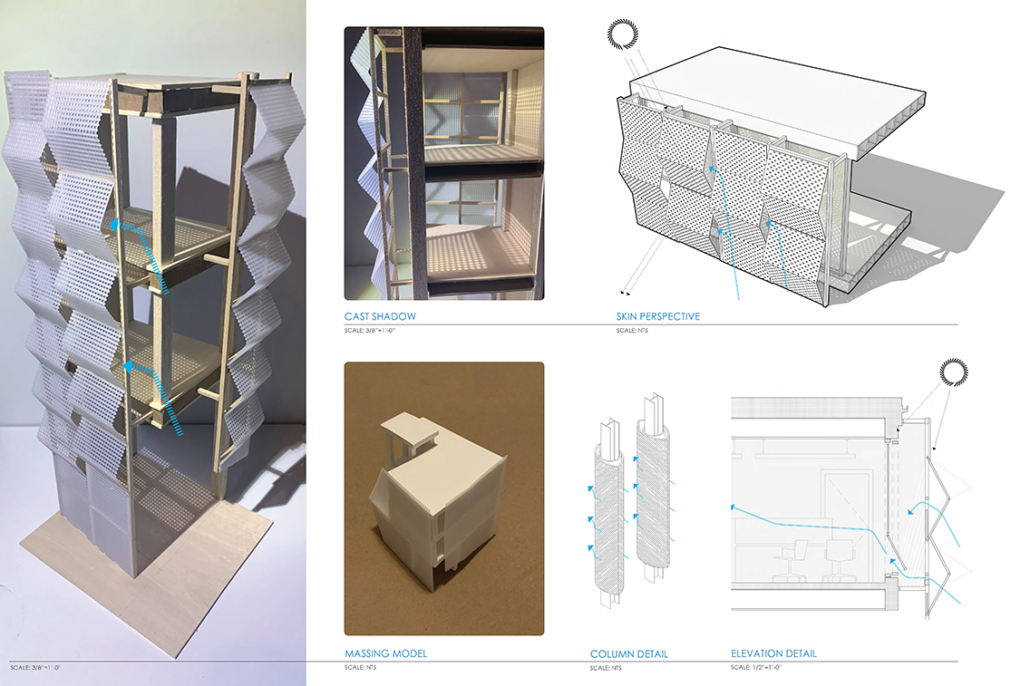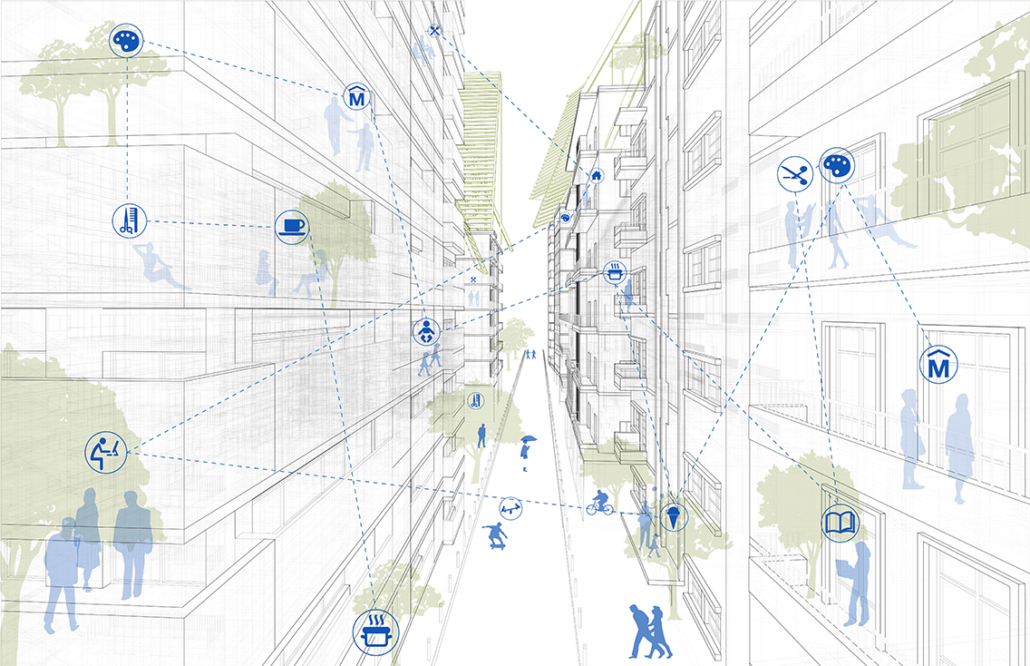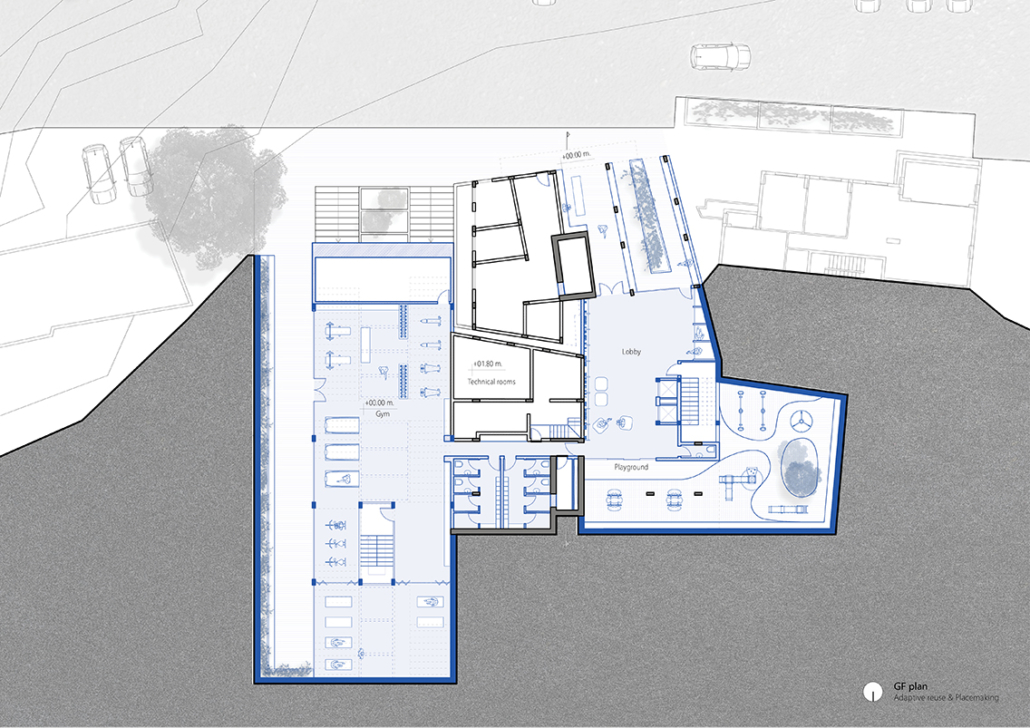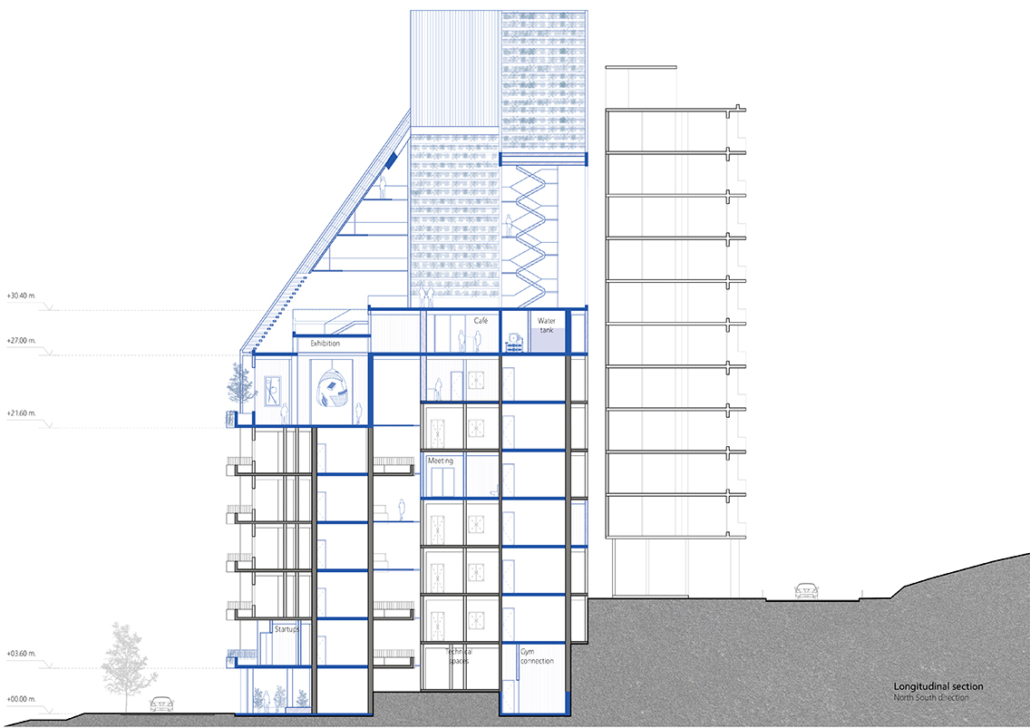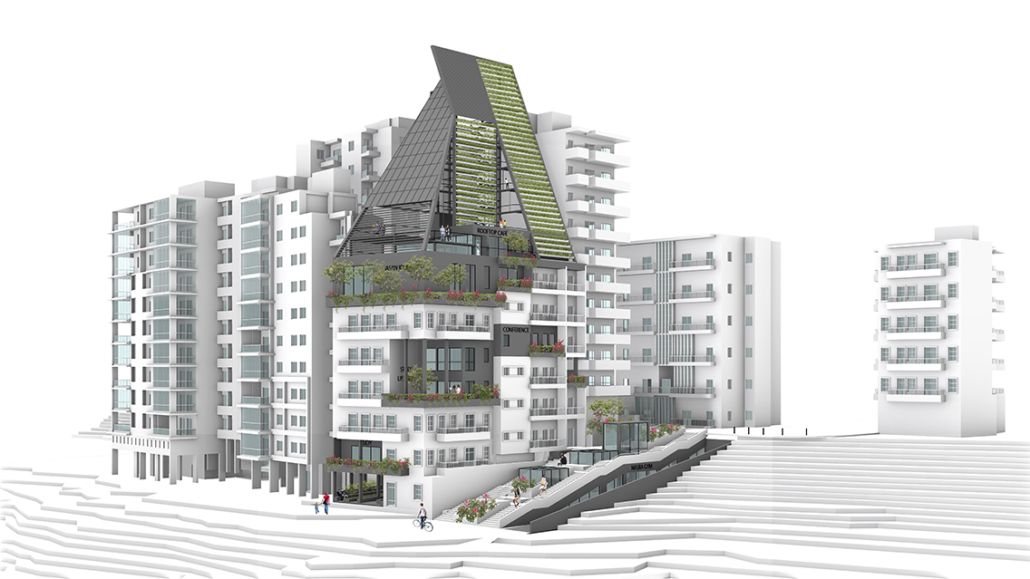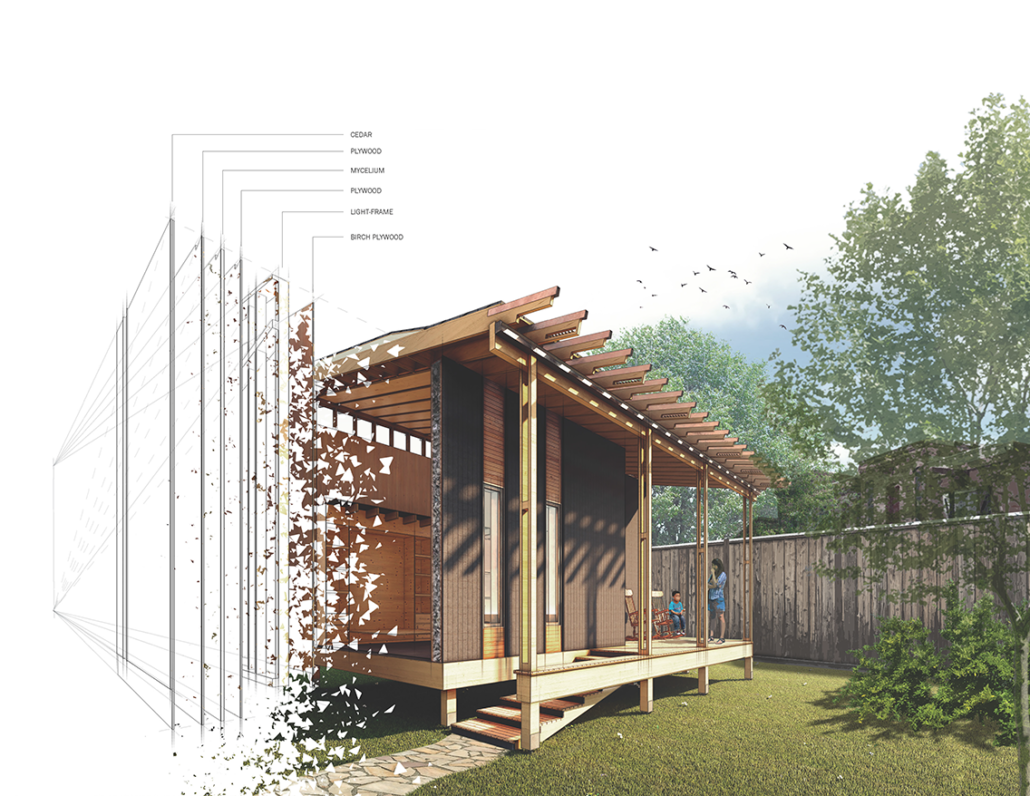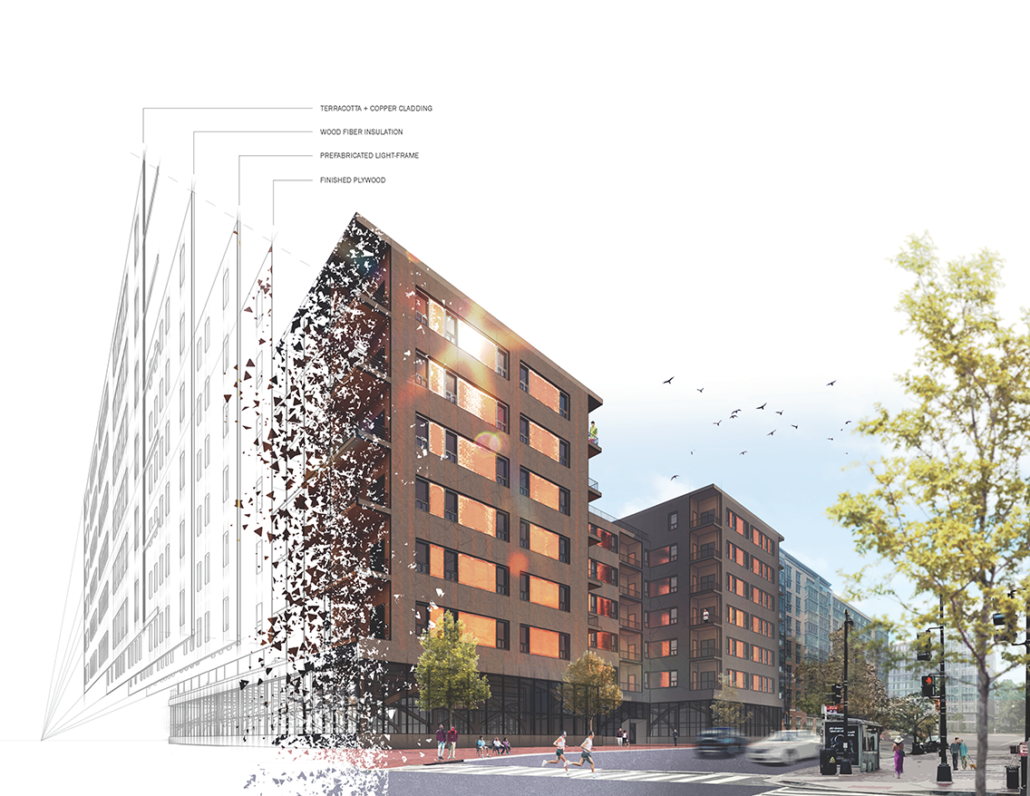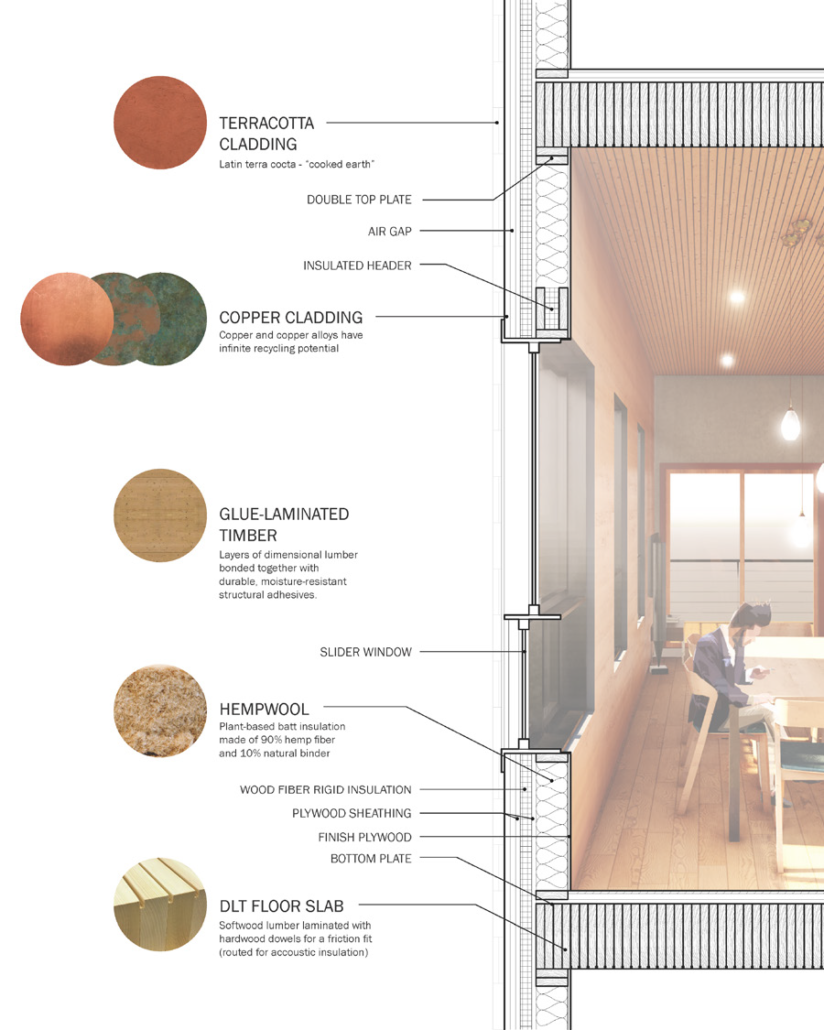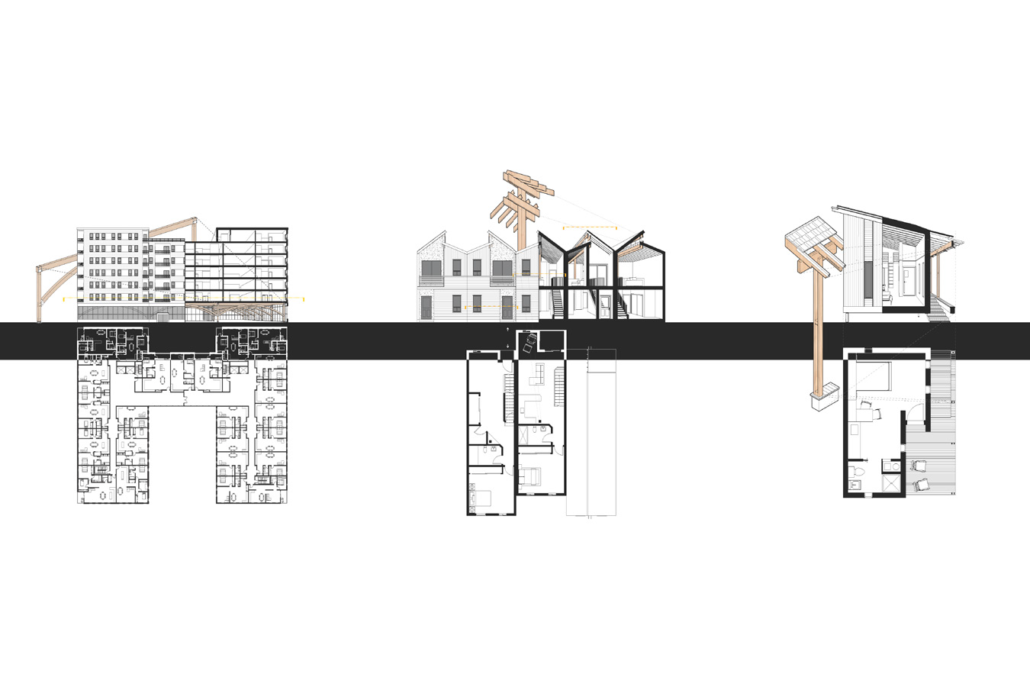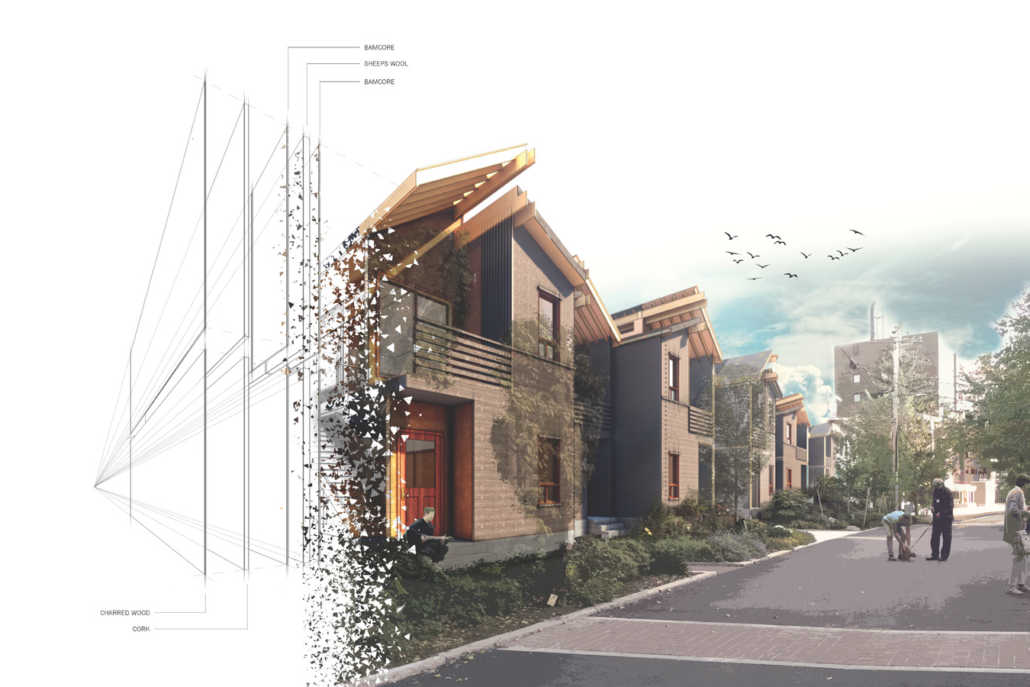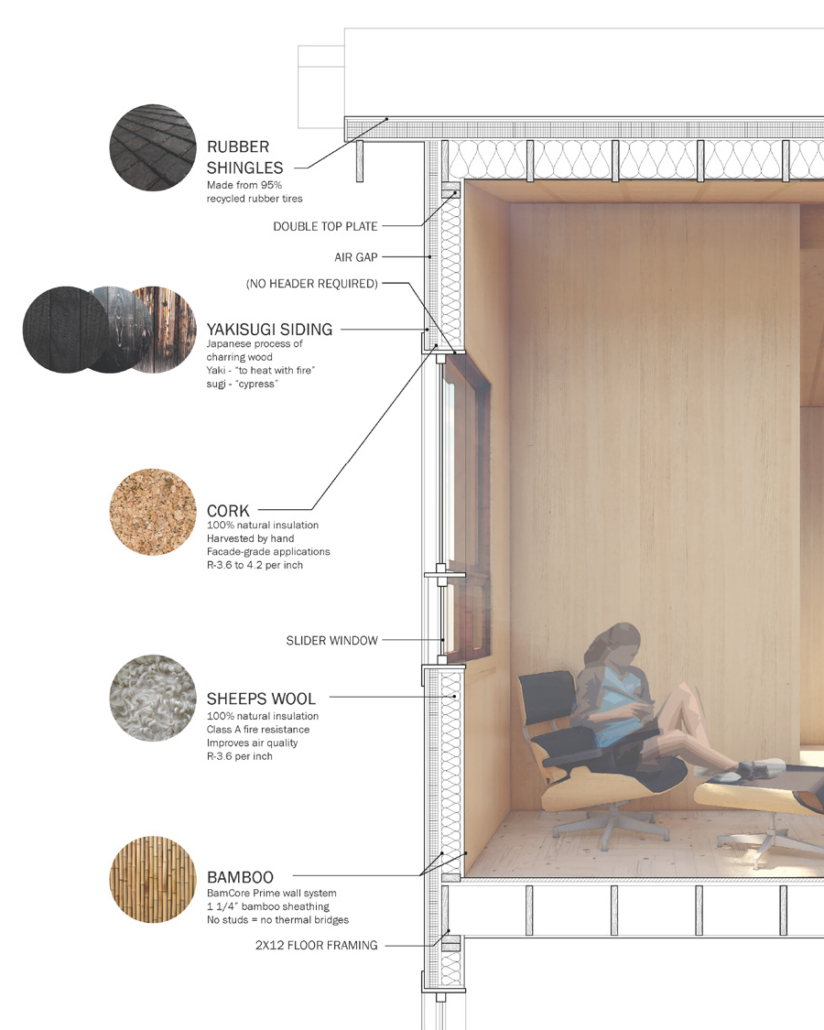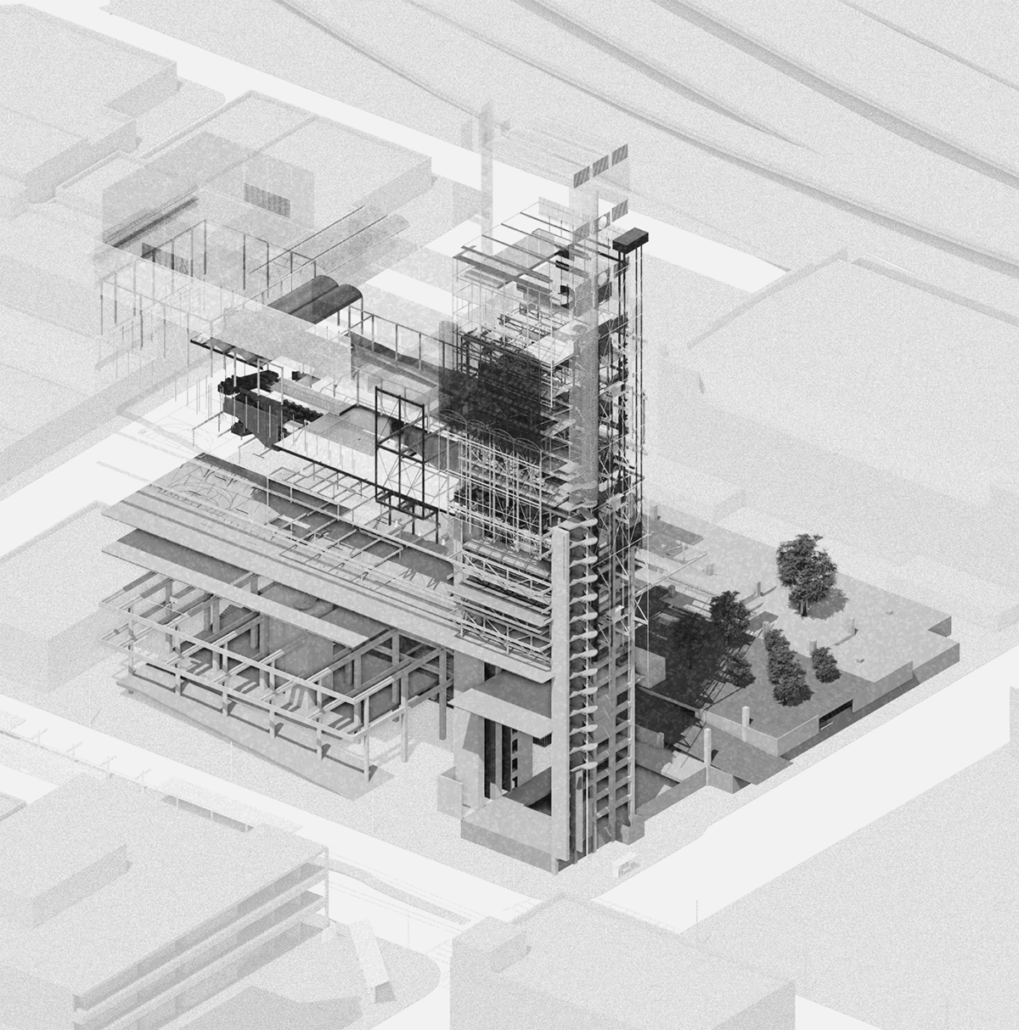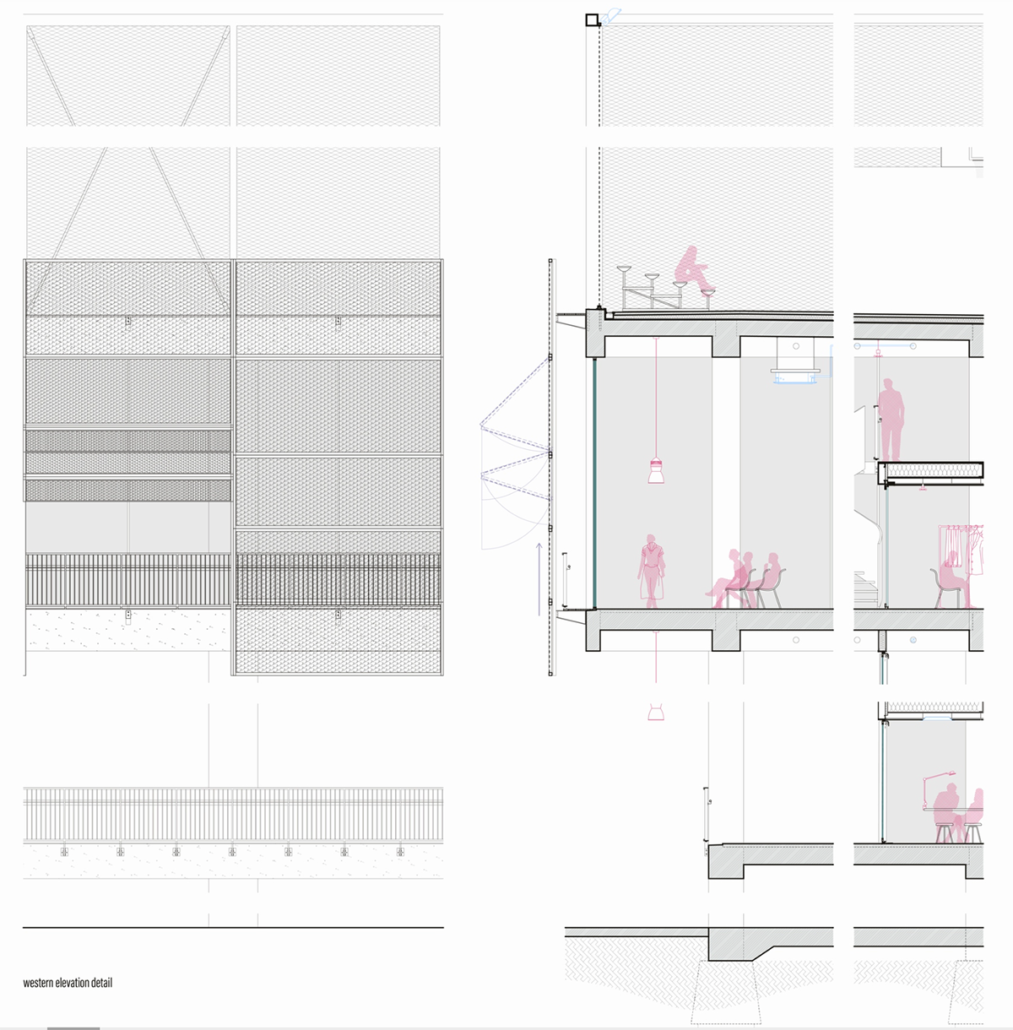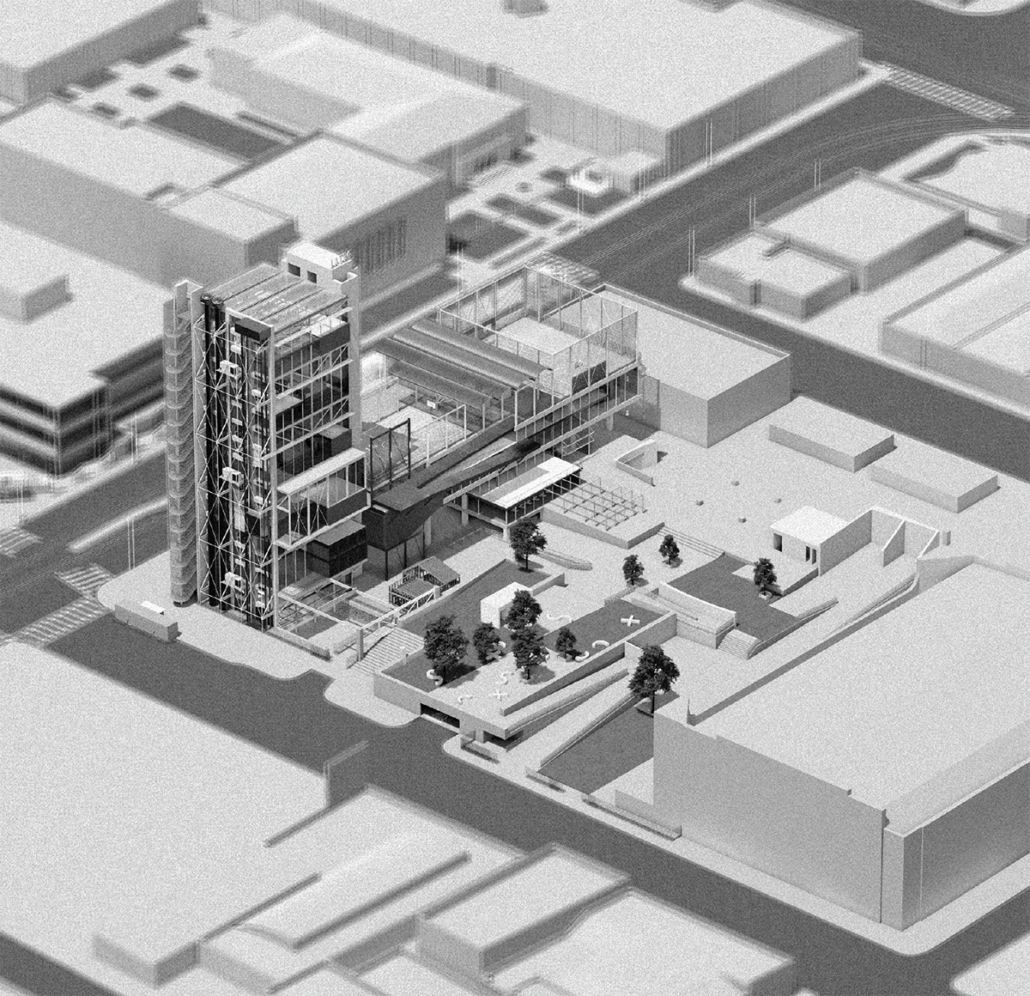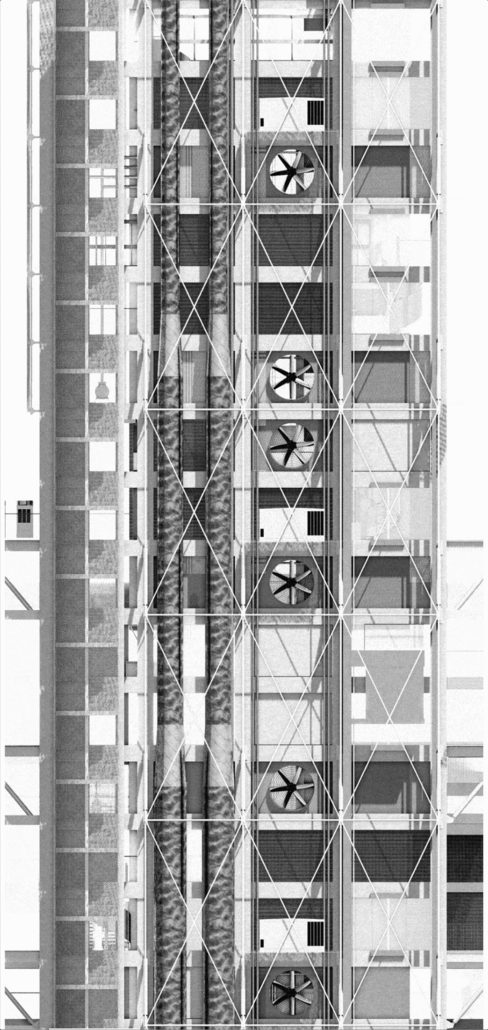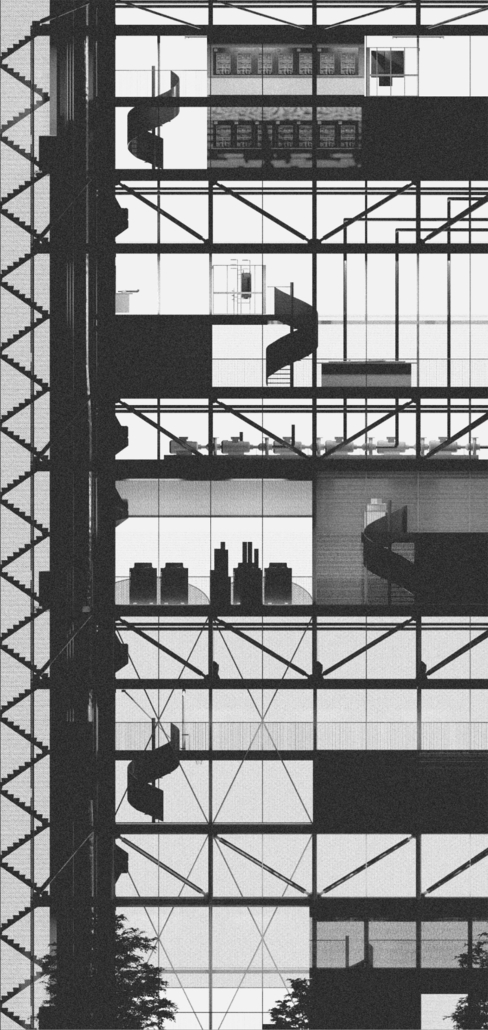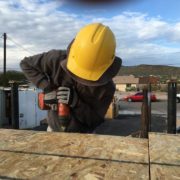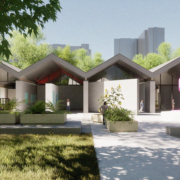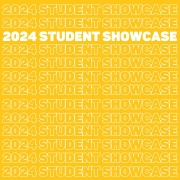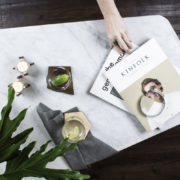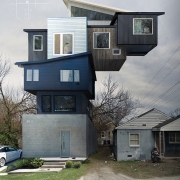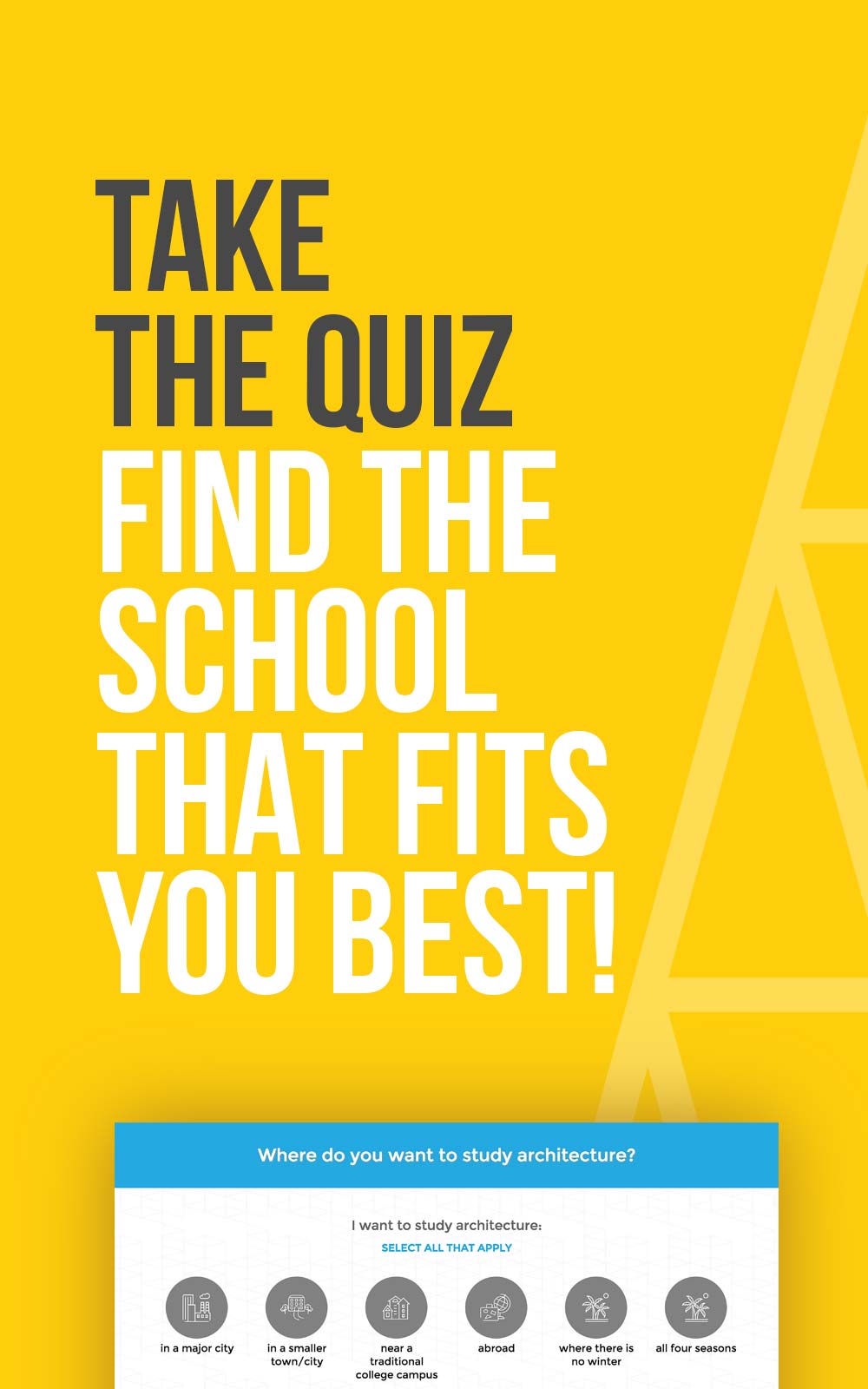Study Architecture Student Showcase - Part VIII
Part Eight of the Student Showcase series this week focuses on student work that brings to light different aspects of sustainability. The concept of reuse is at the core of being sustainable. Each of these projects discusses a unique angle of what it means to be sustainable in both space and matter. Whether it is a ceramics studio in Chicago or green spaces in Los Angeles and Beirut, each of these projects recognize the importance of stewardship in architecture.
For recaps on prior installments, check out Part I, Part II, Part III, Part IV, Part V, Part VI and Part VII.
Nan/nang/: Earth and Us by Zahra Sharifi, M.Arch ’22
University of Manitoba | Advisor: Lisa Landrum
My thesis is focused on the potential of using and re-using local soil and modernized primitive vernacular strategies. I grew up and was educated in the historical city of Yazd, located in the largest desert of Iran, famous for its integrated earth urban fabric and climate adaptive structures. My interest in vernacular methodologies using soil became a starting point for questioning the lack of commitment towards earth construction in cold climates. As abundant and pliable materials, soil and mud are sustainable resources that have been used in construction for thousands of years, yet they have been replaced by harmful substances. By consuming all our natural energy resources, we will eventually reach a stage where manipulating and managing soil will become one of the leading global building strategies, and I believe inherited knowledge of traditional teachings is a starting point for all earth-based research.Focusing on cold climates originated from my experience of living in Winnipeg and the city’s lack of earth awareness. Even though the area endures heavy winter snow, which requires thick waterproofing, insulation, and durable building envelope systems, there is a historical and geological connection between the city and mud. The muddy land of Alexander Docks next to Red river in central Winnipeg, intrigued me to think about the re-use of deposited mud from the river for earth construction. I am proposing an adaptive rejuvenation of the old warehouse adjacent to the docks, by mimicking the natural qualities of mud and adding new insulated exterior earth walls inspired by my own research, previous earth strategies conducted in Manitoba such as Sod houses and traditional Persian earth structures such as Karbandi. The building will act as an earth reconnection center in the heart of downtown inviting the locals and international researchers to engage in earthly thinking.The simplicity of the construction process is in direct relation to the simplicity of the structure which allows us to implement local common labor and on-site preparation. Low-tech earth strategies provide the opportunity for community participation in annual spring maintenance for example reapplying mud plaster on earth walls. By considering the excavated site soil and deposited mud from the river as the main building material ( processed and separated into silt, clay and sand) and reusing existing building waste such as bricks, concrete and steel for reinforcement, there is a possibility of neutral carbon construction.
Instagram: @z.sharifi74, @faumanitoba, @lisalandrum.arch
Terra Studios: A Center for Ceramics Production and Residency in Chicago, Illinois by Faith Primozic, B.Arch ’22
University of Notre Dame | Advisor: Sean Patrick Nohelty, AIA
The city of Chicago has a rich history of ceramics as an art and industry that remains a core part of its architectural identity. Much of this industry existed along the northern branch of the Chicago River where factories produced ceramic building materials for some of the city’s most renowned architects. As this industry declined with the advent of more modern building materials and methods in the early part of the 20th century, the city lost both part of its intricate fabric as well as a part of its unique identity. Through my undergraduate thesis project, I imagine how a pair of buildings to serve craftspeople situated within an urban redevelopment along the north branch of the Chicago River can begin to reestablish a connection between the city’s architecture and its people.
The design for these buildings embodies the idea that architecture should reflect both the occupants that it serves and the society that it inhabits. Structures for artisans and craftspeople who contribute creatively and constructively to our society must therefore be beautiful and enduring reflections of their work — living representations of how both tradition and innovation in their craft enhances the sustainability and livability of the built world. Intertwined with a city’s unique history, this architectural narrative creates a sense of place and allows a city to grow and improve without losing touch with its identity
The proposed buildings exist in an entirely permeable arrangement that allows a pedestrian to pass freely through a new passage under the existing elevated railroad tracks all the way to the river’s edge. The larger of the two proposed buildings serves as a center for ceramics production and includes a large studio, kiln room, research center, gallery, and ballroom. The smaller building is intended as an artists’ residence and shop building, adding a component of living and working to the production of the ceramics. Together, they embody a celebration of the craft of ceramics, from the brick and clay block that support and insulate the walls to the porcelain tile and terracotta relief that lend to its character and beauty.
Instagram: @faith.primozic
Altra Volta: A Neighborhood Hub for the Self-Sufficient City by Samuel Owen, B.Arch ’22
University of Arizona | Advisor: Elena Cánovas
The following capstone project is a community co-op focused on self-sufficiency, in which members grow their own food and fabricate their own products to support themselves and to sell to the community. All waste produced on-site is recycled – solid waste is separated by material to be reused, repurposed, or recycled, and liquid / food waste is sent to an anaerobic digestor to produce energy and fertilizer for an on-site farm network.
This co-op is located in the Provençals del Poblenou neighborhood of Barcelona, the former epicenter of Barcelona’s Industrial Revolution. This area has a long history of industrial co-ops where members could share equipment for collective benefit. Today, the city is trying to develop the neighborhood into a “Technological Innovation District” known as 22@. Unfortunately, most construction following this initiative has done little more than gentrify the community and destroy its historic factory remains.
As an alternative to the aggressive development practices of 22@, this project embraces Provençals’ history and traditions, proposing a return to a circular economy model where daily food and material needs are handled through local collaborative effort, and waste from any one resource flow becomes the raw input for another. Through education, the community is empowered to participate in all steps of the production cycle.
“Altra Volta” – a Catalan phrase meaning both “to have another go” and “another vault” – is a repurposing of Poblenou’s endangered industrial fabric. It consists of two parts – the conversion of still-standing warehouses (into workshops, kitchens, a daycare, cooperative housing, and waste-processing facilities), and the reuse of historic factory foundations for the central marketplace.
On a broad scale, the project utilizes the empty land between blocks to create a “passeig nou” (new promenade) where the community can stroll and relax beneath orchard groves and observe the self-sufficient ecosystem all around them.
Instagram: @samowenarc, @canovas_elena
The Fold by Mark Davis and Ethan Ratliff, BSArch ’22
University of Maryland | Advisor: Michael Ezban
The Fold is a new Resiliency Hub for College Park, Maryland, that focuses on passive strategies to create ventilation and shading that ultimately improves the user’s experience within the building. To achieve these systems, the building is wrapped in a multifunctional and adaptive skin that is mounted to the outer layer of the building. This skin is perforated metal, creating shade and also bending in such a way to allow for better airflow.
Not only does this skin function sustainably, but it can also be adjusted to allow for better views to a lively urban corner of the city. The panels can also shift to allow for daylighting into major public spaces. The building is intended to entice the people of College Park, and show them what creative and sustainable building strategies could look like.
Green Air Rights by Myriam Abou Adal, B.Arch ’22
American University of Beirut | Advisor: Makram Al Kadi
Beirut is overcrowded, yet there is a large number of abandoned buildings and vacant apartments; Beirut is living a social and economic collapse; Beirut suffers from an absence of green and public spaces.
How to best activate the urban vacancies to create a network of multi-scalar micro-economies and green spaces?
I translated my readings of existing literature and case studies into my own glossary of vacancy and response typologies. I then started my fieldwork with rapid appraisal through on the ground measurements, interviews with residents to understand their needs, and immersion in the life and culture of the neighborhood I chose.
I am proposing a network of multi-scalar interventions that relies on a strategy of micro-economies centered around the communal life of the many users I met, while respecting nature and maximizing green spaces. I identified a variety of vacancies typologies and revived them favoring adaptive reuse, parasitic architecture, and placemaking. I translated the building code into a green building code to optimize the allowed buildable area and the gabarit, that guided my massing and choice of materials.
The ground floor vacancies are connected to create large and inviting lobbies that act as a continuation of the public space to drive the community in. The upper floor vacancies and abandoned buildings are treated using adaptive reuse methods and bridged to connect educational, cultural, entertainment, and service programs. On the roofs, A-frame steel structures host the necessary infrastructure for urban farming, water harvesting, and energy production.
This project may be viewed as a pilot intervention as part of a bigger strategy to green the city of Beirut, to introduce a culture of self-sustainability.
Instagram: @myriamabouadal, @ard_aub
Dust To Dust: Embracing Entropy Through Organic Building Materials by Ryan Muir, M.Arch ’22
University of Maryland | Advisor: Michael Ezban
Architecture has had a complicated relationship with this agent of time. Some modernists sought to “overcome” time by turning buildings into machines. And today we’re very much concerned with keeping up with the times. Through commercialism, buildings became commodities or machines for profit. Throughout this time, innovators have striven to and succeeded in inventing building materials that are inert or permanent. However, the problem is that our society doesn’t treat buildings as permanent. They go out of style or can’t keep up with our changing needs. This has bred a practice of planned obsolescence that may reflect the dynamic, living organism of society, but fails to see buildings themselves as organisms. Perhaps the issue is with identifying our buildings as machines, building them for longevity and durability while simultaneously attributing to them an inherent disposability.
Per Leon Krier’s diagram “Civitas”, a city is made up of two parts: res publica and res economica. Res publica is made up of monuments and monumental buildings. Res economica is made up of the streets and the auxiliary buildings. In other words, res publica represents the permanent, consistent nature of a city, while res economica is impermanent, subject to change and adapt to the needs of the city. Each part of the city represents a different opportunity to reshape our view of buildings. Res publica should be built to last and have its effect on the city for generations, slowly and subtly acquiring a patina that conveys wisdom and experience. On the other hand, Res economica could be constructed to be deconstructed, to have change affected on it, to evolve.
This thesis set out to test architecture’s ability to embrace the process of entropy through organic materials and explore these methods at three scales within the “res-economica” of Washington, DC. My approach to these different scales was to determine the viable materials, design each wall section assembly, and design the exterior and interior expression of these materials at the human scale. Then I dove into greater detail, beginning with the smallest scale as the furthest potential adoption of this theory.
Trades Tower: an Ode to Service Space by Daniel Vazquez, B.Arch ’22
Cal Poly Pomona | Advisor: Robert Alexander
Is architecture inextricably linked to its function? Can a building’s function vary, not just from one building to the next, but from person to person? In this project architecture’s role becomes one of user relevancy and contextual activation, things that are in constant flux on a college campus. The question then becomes: Can you make a building re-usable? Can you design a project that is in flux? Making a lliminal space where the public and private functions blur and where the project provides spaces to use that are activated instinctually. The formal program then becomes a catalyst and a framework that activates but does not dictate use. The project thus strays away from a “totalization,” opting instead to embrace and broadcast the variability of daily life.
As the city of Los Angeles continues to densify, issues such as public space and identity become increasingly urgent. Los Angeles Trade-Tech College, located directly south of the Santa Monica freeway (I-10) on Flower St. and Washington Blvd., exemplifies this dilemma as it expands and attempts to carve a place amongst the South LA urban fabric. Here, a disparate set of buildings create a hard perimeter around the college, with all buildings locked to the same datum rendering the campus invisible to the public. Despite opportunities such as proximity to the A-Line train station and direct visibility from the 10 freeway, a sense of destination is squandered by anti-pedestrian access and lack of identifiable elements. The character of LATTC and the education it provides are not advertised or readily legible.
Next installment coming soon!

